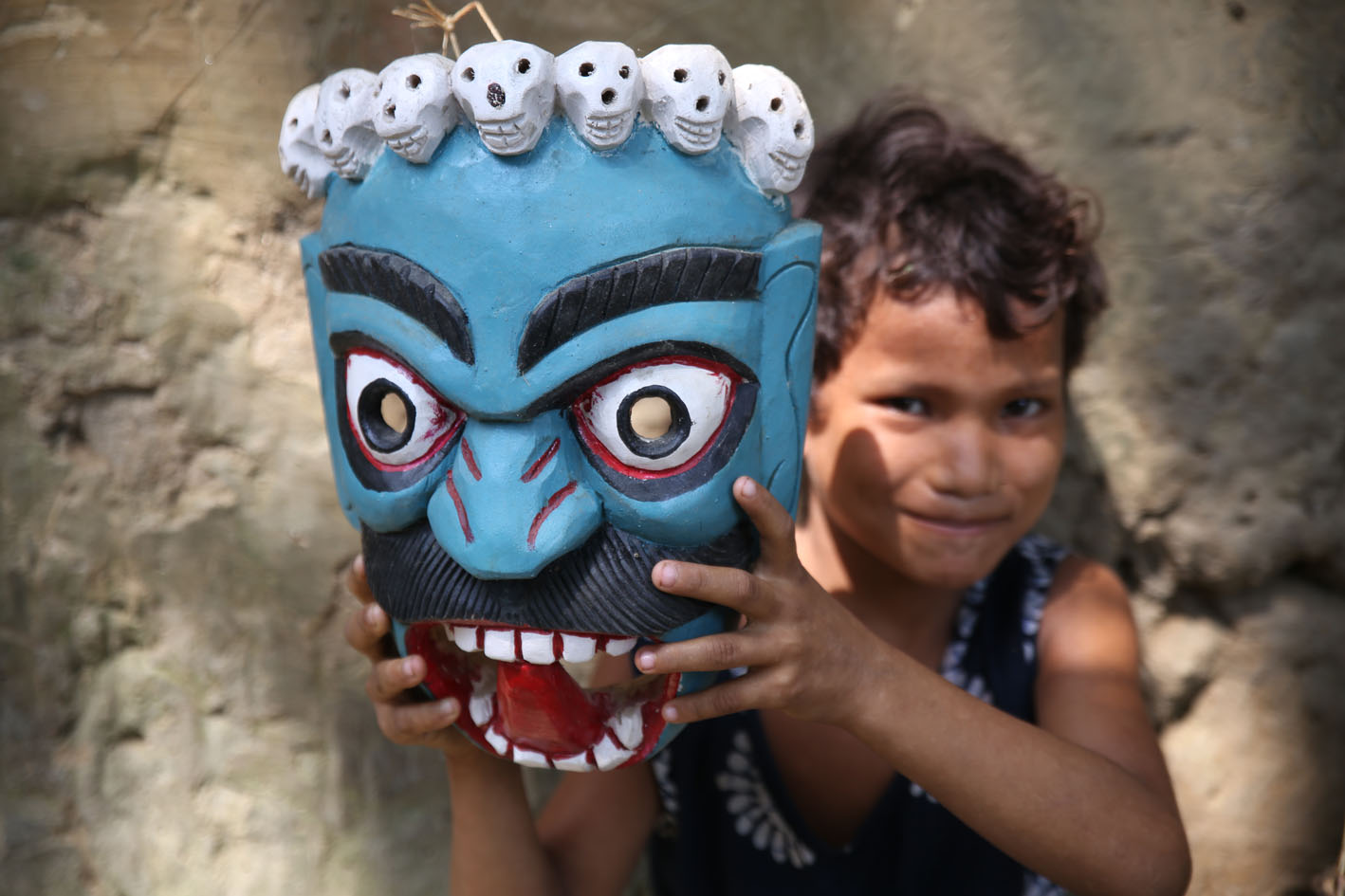
Sandipa Malakar is a roving lens – a solivagant who is always accompanied by her faithful camera as they wonder, far from the beaten tracks, freezing moments in time. Critically acclaimed for her ability to capture that perfect moment and blessed with the rare ability that helps her elevate her work to an art form, Sandipa’s photo journeys are so rich in their composition that they seldom require words to communicate the narrative. Naturally, Sandipa remains, one of our favourite exponents of the art form. Here, she takes us on a journey to the North of Bengal, and well in time to plan out trips should the readers so decide, to introduce us to the world of Gomira: the wooden masked dance of Bengal.
Though Gomira had originated in Malda, it has attained its acclaim in the Jalpaiguri and Dinajpur districts of West Bengal, with Kushmandi as the epicentre, where it is performed towards the end of the Bengali Year, heralding the new year as it were.
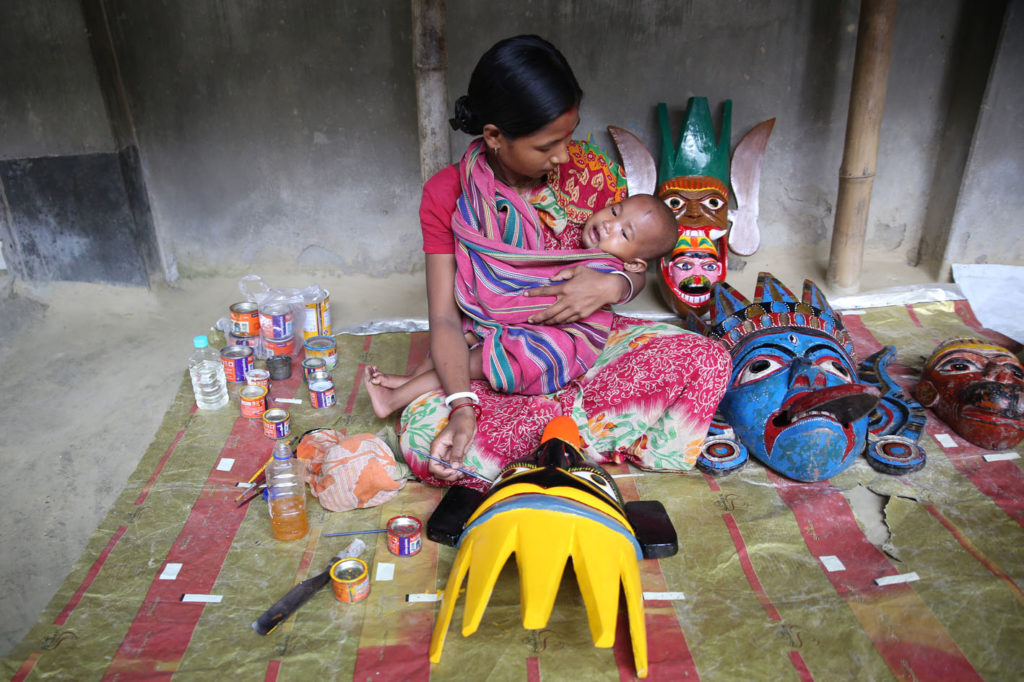
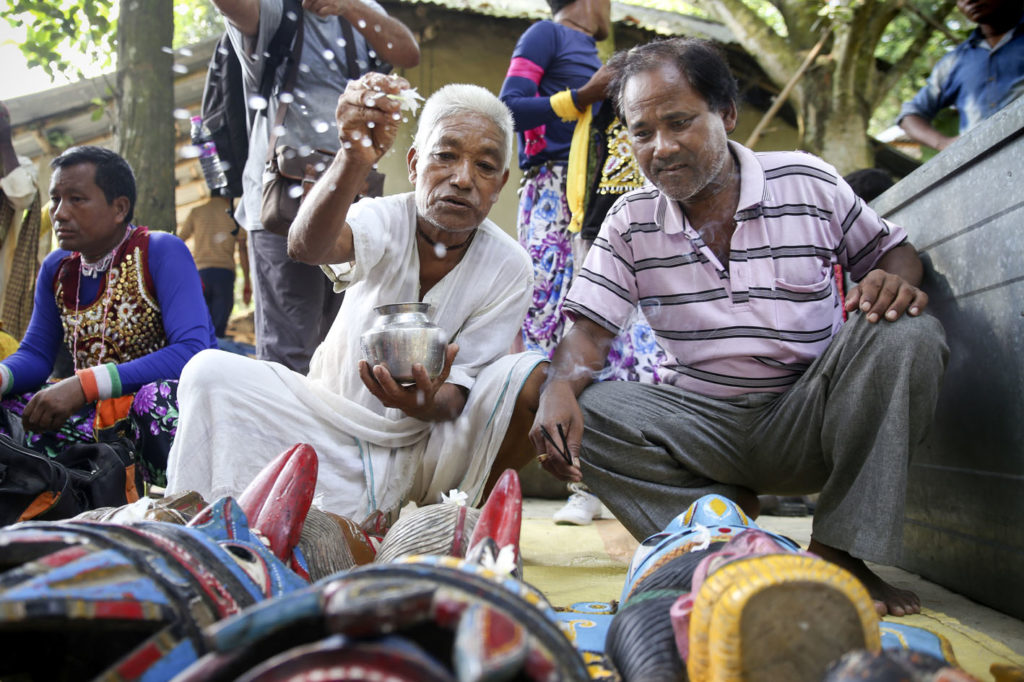
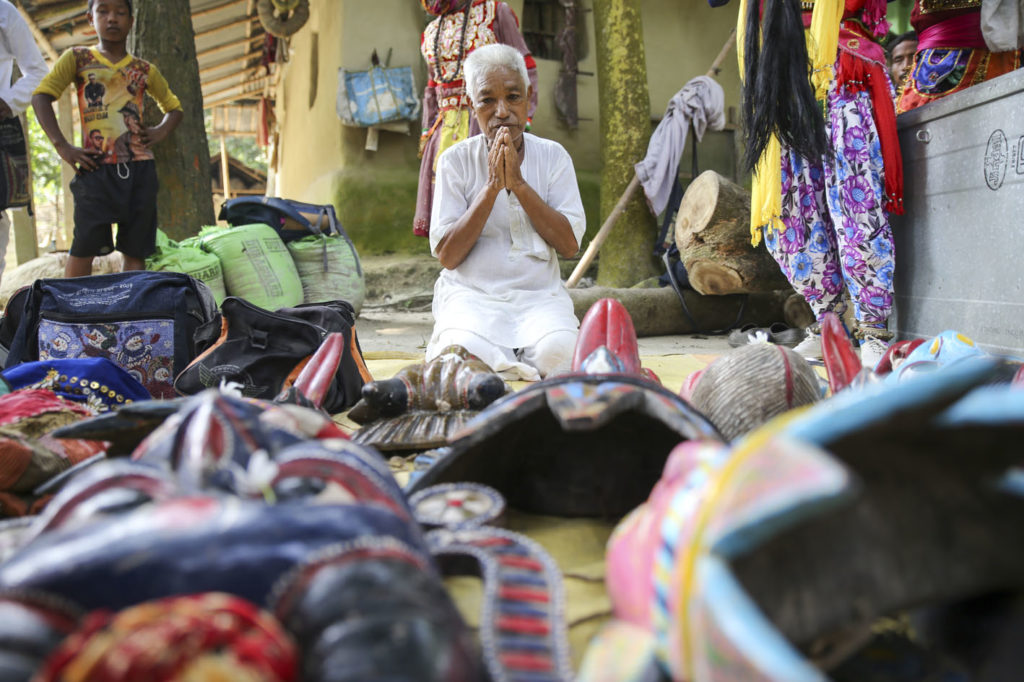
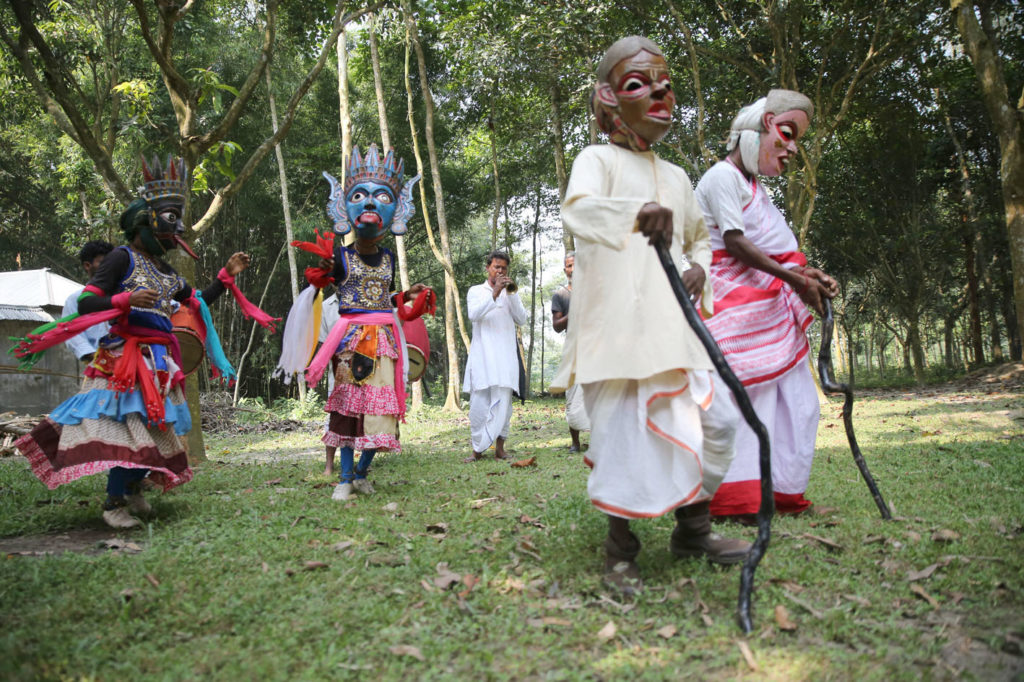
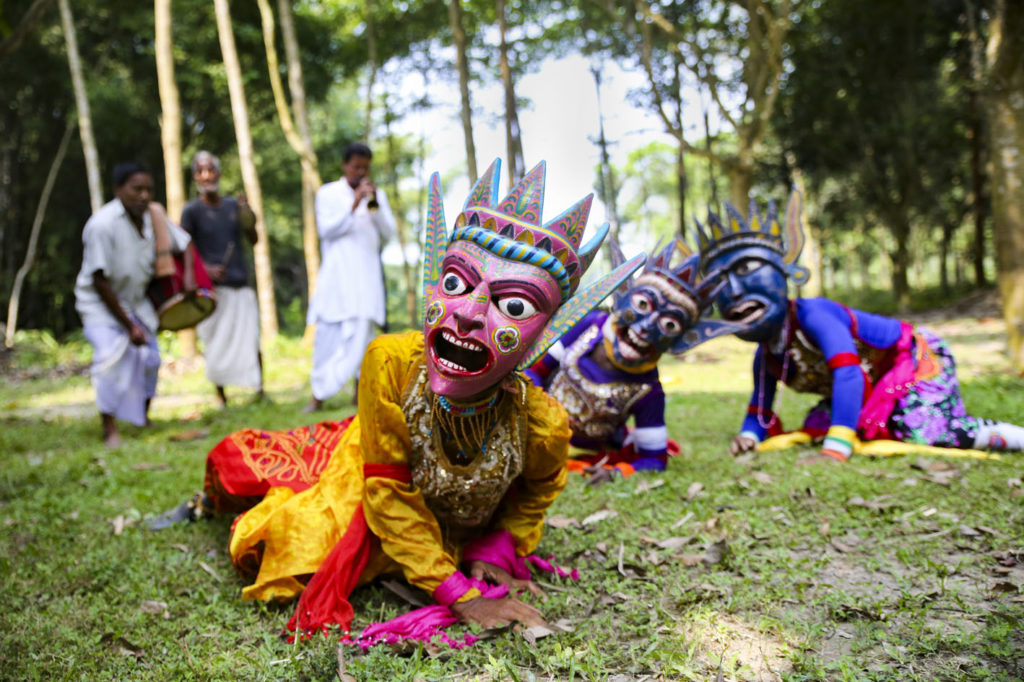
Originally budding as a ritual to appease the primordial energy by a people who were mostly animistic, the Gomira dance form has evolved with the prevailing socio-religious beliefs of the times, Lord Shiva and Parvati transforming into Bodhisattva and Tara with the advent of Buddhism, to yield space to Adya and Chandi sharing the stage with Lord Shiva as Hinduism revived in its new avatar. The performers wear different wooden masks to depict tales from the popular folklores relating to the different incarnations of Kali, Nrishingha and other deities, seeking their blessings for securing the life and libs of the faithful. While the dance form generally follows no set story line, the performances are known for their zest and colourful energies, which are as revered for their entertainment value as they are as acts invoking the potent power of the supernatural to ward of the evil thereby ushering in the forces of benevolence. On a different level, the performance is also known to work as a bonding agent, bringing the members of the community together, focussing them to achieve common goals and take part in common festivities rising above the interests of the self.
The Gomira masks are themselves a part of the elaborate ritual that can trace their origin back to the Desi and Poli communities of the local Rajbongshis. Initially it used to be a community affair, with the locals at the village level promising a mask to the village deity as an offering of appeasement, for the common good. That is perhaps reason why traditionally the performances begin with the entry of the Bura-Buri, the human manifestation of Shiva and Parvati.
The actual dance is performed by the males of the village, who also portray female characters, being distinguished by their masks and accompanying costumes. All performers wear the ghungur, the musical anklet tied to the feet of the dancers with which they keep rhythm. Vigorous in their movement, the dance pieces are aimed to provide complete entertainment and are generally performed with the accompaniment of a number of musical instruments. The dance is performed in the designated village “Gomira Tala” – the village community centre, which is adorned with festoons during the performance and around which a village fair is held as an extension of the event.





Over time, the Gomira too was becoming a lost art form with the tradition of the mask making and the dance that it espoused slowly fading. Socio-economic difficulties faced at the village level in general and by the artisans in particular had brought things to a pass as the young continued to move towards the cities in search of better employability.
In 2013 the Government of West Bengal signed a Memorandum of Understanding with the UNESCO to help reverse this trend by promoting culture-based livelihood for the artisans and since then there has been a marked improvement on the ground level. Artisan cooperatives, NGO’s and Government departments have come together and their concerted efforts are ensuring that the unique art form slowly regain its lost glories, even as the socio-cultural legacies that they represent are revived for future generations. One of the most potent moves towards this end has been the establishment of the regional crafts hub which not only facilitates the artisans engaged in pursuing it, but also provides them with the essential inputs and last mile connectivity to the market to ensure the commercial success of the village enterprises. The force multiplier has been the act of packaging the art form as a tourist attraction wherein visitors can spend time in the village of the mask makers, see them at their creative best even as they work and help sustain the local economy – a win-win for all the concerned parties.
- All photographs are copyright protected property of Sandipa Malakar

